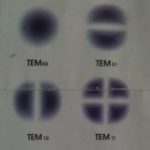- This topic has 22 replies, 13 voices, and was last updated 8 years, 2 months ago by
 Rajguru M. Mohan.
Rajguru M. Mohan.
-
AuthorPosts
-
-
July 11, 2015 at 3:18 am #22335
 Taiwo Ambali AbiolaParticipant
Taiwo Ambali AbiolaParticipantI have issues with the best way or the acceptable standard to calculate the DCF length. In optisystem, I saw in the Pre and Post DCF example where 24km dcf with -80 ps/nm/km dispersion co-efficient is used for 120km SMF. This means 1 DCF length is for 5km SMF. I understand the fact that DCF is designed to provide a negative dispersion coefficient for the dispersion in SMF.
In reality, is this 1km DCF to 5km SMF the standard by all manufacturers of DCF?. I mean do they equably maintain the coeff. of -80 ps/nm/km, 0.6db attenuation and 0.21 slope as used in the optis sample. This is because I have not been able to come across any DCF datasheet. Thanks
-
July 11, 2015 at 1:44 pm #22343
Ravil
ParticipantHi Taiwo,
From my experience, in general, I would always recommend to check the specifications of all the DCF manufacturers for this dispersion coefficient. In spite of the fact that -80 ps/nm/km is the most standard value for DCF, for standard SMF it may vary due to the requirements for residual dispersion parameter in a particular design. This parameter becomes very important in WDM systems design. The attenuation, which is in dB/km, may slightly vary as well. -
July 12, 2015 at 7:59 am #22346
 Ashu vermaParticipant
Ashu vermaParticipantHi Taiwo,Basically it depends upon manufactrur as Ravil said.In most of the papers that i have seen value of dispersion taken is -85ps/nm/km and attenuation 0.5 db/km for dcf.Roughly ,dcf dispersion is negtive 5 times the dispersion of your SMF.If it is 16 ps/nm/km then dcf of -80ps/nm/km would be best and if you are using SMF of dispersion 17 then -85 would be best choice.Rest attenuation may vary 0.5-0.6 dB/km
-
July 12, 2015 at 8:17 am #22348
Alessandro Festa
ParticipantI agree with Ravil and Samsung’s suggestions. I also add that DCF usually has a lower core diameter than SSMF, which means that you need to be careful with nonlinear effects (for example if you put DCF in the mid-stage of an EDFA, do not go into DCF with too high power!).
-
July 12, 2015 at 10:13 am #22350
 Taiwo Ambali AbiolaParticipant
Taiwo Ambali AbiolaParticipantThanks to you all. I really appreciate your contributions
-
July 12, 2015 at 10:18 am #22351
 Taiwo Ambali AbiolaParticipant
Taiwo Ambali AbiolaParticipantI guess the reason why DCF is usually not added to the transmission distance is because it comes in form of a module despite it is also measured in km; Am I right?
-
July 12, 2015 at 1:10 pm #22355
Alessandro Festa
ParticipantHi, the reason is that, despite id may add a few dB of loss, is used in the mid-stage of an amplifier (booster or preamp) so its loss in terms of added noise is negligible.
-
-
July 12, 2015 at 10:18 am #22352
 Ashu vermaParticipant
Ashu vermaParticipantWelcome Taiwo Ambali,,as a member its our pleasure to share our knowledge with other participents.Thank you alessandro for adding the important point regarding core diameter linked to non linearities in dcf.
-
July 12, 2015 at 5:18 pm #22356
 gaganpreet KaurParticipant
gaganpreet KaurParticipantHello i think i posted it on previous forum too. length of DCF is governed by L1D1+L2D2=0 where L1 is length of transmitting fiber and D1 is its dispersion whereas L2 is DCF length with dispersion D2.
find refrence: IEEE j. of Lightwave Technology 1999 paper by Marhic -
July 14, 2015 at 10:19 am #22405
 K. Esakki MuthuParticipant
K. Esakki MuthuParticipantI do agree with Ravil and Sam Sung. can any one please explain how nonlinearity arises in DCF
-
July 14, 2015 at 10:38 am #22410
 Ashu vermaParticipant
Ashu vermaParticipantHello esakkimuthu
The main reason of the more non linearities impairments in DCF is the small effective area of DCF as compared to SMF.Generaly the Aeff area of DCF is around 22um^2 and around 80um^2 in case of SMF.The value non linear phase shift given as
φ=2π/Λ n2 P/Aeff L
So less the value of Aeff,more the phase shift and more the non linearities.However this also have some benefits and drawbacks in signal amplification.
Please visit the link i have given below to read very good discussion on this particular topic-
April 5, 2016 at 8:50 am #35630
 Dr. Dhiman KakatiParticipant
Dr. Dhiman KakatiParticipantHi Sam,
This is really a informative and to the point answer, It is going to be very much useful for my WDM system design.regards,
Dhiman
-
-
July 15, 2015 at 6:12 am #22438
 Abhishek ShramaParticipant
Abhishek ShramaParticipantHello!!
I agree with explainations given above.
Dispersion and FWM are inversely related. value od dispersion in DCF is usually taken -85ps/nm/km which adds to non linear impairments.
Check the following links for specific content and research: -
July 15, 2015 at 6:13 am #22439
 Abhishek ShramaParticipant
Abhishek ShramaParticipant -
July 18, 2015 at 8:10 pm #22543
 Taiwo Ambali AbiolaParticipant
Taiwo Ambali AbiolaParticipantThanks a lot all for your contributions
-
July 19, 2015 at 4:27 am #22551
 Ashu vermaParticipant
Ashu vermaParticipantWelcome Taiwo,its always pleasurable to participate in discussion and share knowlegde with all the forum participants .your topic are always intersting and good for discussion as we can learn many things from other forum members.Also thanks to Ravil and Alessandro for making such a good points.
-
April 5, 2016 at 2:23 pm #35705
 Ranjeet KumarParticipant
Ranjeet KumarParticipantHi Taiwo Ambali Abiola,
I will suggest you to please refer to optisystem library component pdf file where you will various standard values of different parameters in the heading WDM design.
AS DCFs are highly nonlinear heavily-doped fibers with small effective areas.
The condition for perfect dispersion compensation is D1
D1L1+D2L2 = 0
i.e., its length should be chosen to satisfy
L2 = – (D1/D2) L1
Where D1 and D2 are the fiber dispersions of SMF and
DCF respectively. L1 and L2 are lengths. Thus the DCF has a large negative value of D2.-
April 5, 2016 at 3:01 pm #35736
 Dr. Dhiman KakatiParticipant
Dr. Dhiman KakatiParticipantHello Ranjeet Kumar,
Thank you so much for providing Some more valuable information about the disadvantages of using DCF in WDM systems, Can you suggest me which dispersion compensation technique would be best to implement in WDM/DWDM system. Thanking you.Regards,
Dhiman
-
-
April 5, 2016 at 2:32 pm #35716
 SAHIL SINGHParticipant
SAHIL SINGHParticipantHi Ranjeet Kumar,
This query seems to be raised almost a year and i dont believe that it would be yet to addressed but anyways thanks for the information..
Regards
Sahil Singh -
April 5, 2016 at 2:52 pm #35731
 umer syedParticipant
umer syedParticipanthi all
the total diispersion along the length should be equla to the zero for the complete dispersion…
Dsmf*Lsmf+Ddcf*Lcf = 0
i.e., DCF length should be chosen so as to to satisfy zero tola dispersion..
Ldcf = – (Dsmf/Ddcf) Lsmf
Where Dsmf and Ddcf represents the fiber dispersion coefficients of SMF and
DCF respectively.how there is again such condition for the dispersion slope….the total diispersion slope along the length should be equla to the zero for the complete dispersion
with regards-
April 5, 2016 at 3:07 pm #35739
 Dr. Dhiman KakatiParticipant
Dr. Dhiman KakatiParticipantHello Umer Syed,
will please elaborate this point taking one example or reference, so that I am able to understand the full point.Regards,
Dhiman
-
-
May 3, 2016 at 12:01 pm #38760
 umer ashraf waniParticipant
umer ashraf waniParticipantFOR WDM one have to analyze dispersion wrt center frequency
-
May 5, 2016 at 2:53 am #38859
 Rajguru M. MohanParticipant
Rajguru M. MohanParticipantHi,
I agree to the points of Ranjeet that “length of DCF is governed by L1D1+L2D2= 0 where L1 is length of transmitting fiber and D1 is its dispersion whereas L2 is DCF length with dispersion D2”.
This is actual formula for calculating length of DCF, from this formula you will find dispersion parameters of DCF as negative.
Thanks
-
-
AuthorPosts
- You must be logged in to reply to this topic.

